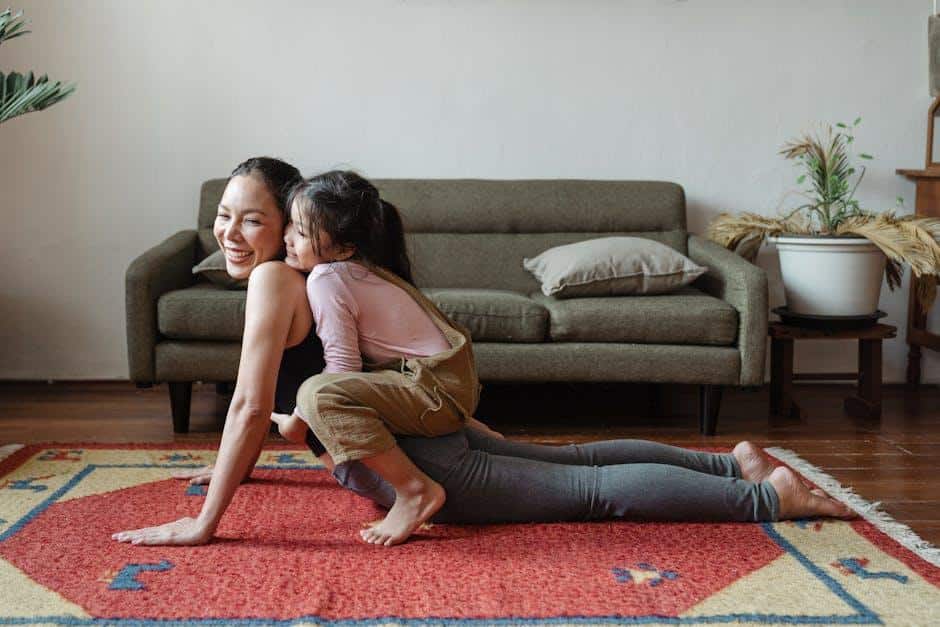In a world that moves faster every day, our children often find themselves caught between the desire to connect and the need to protect their own hearts. Teaching kids about healthy boundaries isn’t just about rules or restrictions-it’s about helping them understand their worth, respect their feelings, and navigate relationships with confidence and kindness. When children learn to embrace boundaries, they gain a powerful tool for self-care that shapes their emotional health for a lifetime. This journey isn’t always easy, but it’s one of the most loving gifts we can give our little ones-a foundation of safety, respect, and self-love that will guide them as they grow. Let’s explore how we can gently help kids understand and embrace the beautiful power of healthy boundaries.
Understanding What Healthy Boundaries Look Like for Kids
Kids need clear and consistent cues that help them understand their personal space, emotions, and limits. Healthy boundaries are like invisible shields that protect their self-esteem and teach them respect for themselves and others. When children learn to identify their own feelings and say “no” without guilt or confusion, they build confidence that lasts a lifetime. It’s essential to encourage them to express discomfort or set limits in ways that feel safe, whether it’s about physical touch, time spent together, or even digital interactions. This foundation empowers kids to navigate relationships with empathy and strength.
Teaching kids about boundaries isn’t just about saying “don’t”-it’s about showing them what kindness to themselves looks like. Start by modeling how to respect others’ space and feelings, and then help them recognize their own needs. Some signs of healthy boundaries in children include:
- Comfortably asking for help or space when overwhelmed.
- Using words to share how they feel rather than withdrawing in silence.
- Knowing when to say yes and when it’s okay to say no.
- Respecting others’ belongings and feelings without overstepping.
When kids see boundaries as tools for protection and self-care rather than rules to break, they step into their power-and the world notices.
Recognizing Signs When Boundaries Are Being Crossed
Children may not always verbalize discomfort, so it’s crucial to pay attention to their nonverbal cues and subtle reactions. Signs like withdrawing from a situation, avoiding eye contact, or suddenly becoming quiet can indicate that they feel uneasy or overwhelmed. Watch for changes in behavior, such as increased irritability, reluctance to participate, or physical tension. These emotional and physical responses are their way of signaling that a personal boundary has been crossed, even if they don’t have the words to express it yet.
Encouraging kids to recognize these signs empowers them to advocate for themselves. Teach them to trust their feelings when something feels “off” or uncomfortable, and reassure them that it’s okay to say no or ask for space. Emphasize that boundaries aren’t just rules-they are a form of self-respect and care. Some key signals to help them identify include:
- Feeling anxious or scared without understanding why
- Wanting to escape from a conversation or activity suddenly
- Feeling physically tense or wanting to back away
- Speaking softly or avoiding sharing thoughts and feelings
Encouraging Open Conversations to Build Trust and Respect
Creating a safe space where children feel comfortable sharing their thoughts and feelings is the cornerstone of building deep trust. When kids sense that their words are valued and heard without judgment, they naturally open up and begin to express their boundaries with confidence. This openness encourages a mutual understanding that boundaries are not walls-they are bridges of respect and care that connect us authentically. Parents and caregivers can foster this by:
- Listening actively and validating children’s emotions, showing that their perspective matters.
- Asking thoughtful questions that invite kids to articulate their needs and limits without fear.
- Modeling vulnerability by sharing your own experiences with setting and respecting boundaries.
Through these conscious conversations, children learn that boundaries honor their individuality and build respect both ways. This mindset helps them see that setting limits isn’t about exclusion or punishment-it’s about creating meaningful connections where everyone feels safe and empowered. As trust grows, kids become more resilient, empathetic, and willing to engage in healthy relationships throughout their lives.
Practical Tips for Teaching Kids to Assert Their Boundaries Confidently
Empowering children to confidently express their boundaries starts with nurturing their self-awareness. Encourage them to listen to their feelings and help them put those emotions into words. You might say, “I feel upset when you take my toy without asking,” to model clear communication. Role-playing different scenarios where they can practice saying “no” or asking for space reinforces their right to personal limits in a safe environment. Consistently validate their feelings and decisions to boost their self-esteem, making it easier for them to stand firm even in challenging social situations.
Building boundary confidence is also about teaching respect – both for themselves and others. Guide your child to recognize and honor the limits others set by asking questions like, “How do you think your friend felt when you did that?” Simple reminders such as:
- “It’s okay to say no if you’re uncomfortable.”
- “Your body belongs to you, and only you decide who can touch it.”
- “Friends listen and respect each other’s feelings.”
These affirmations cement an understanding that boundaries are about mutual care, not just rules. By creating open conversations around these topics, children come to cherish their personal space and communicate boundaries without fear – a gift that empowers their growth for a lifetime.
Concluding Remarks
Helping kids understand and embrace healthy boundaries is more than just teaching rules-it’s about nurturing their sense of self-worth and respect for others. When we guide children to recognize their own limits and honor those of the people around them, we empower them with tools that will serve them their entire lives. It’s not always easy, and it takes patience, love, and consistent example-setting. But watching a child confidently express their needs, say “no” when something doesn’t feel right, and build trusting relationships is one of the most beautiful gifts we can give. In a world that often blurs personal lines, let’s be the steady voices that help our kids feel safe, seen, and strong in their boundaries-because when they do, they learn to protect their hearts and flourish with kindness and courage.
















